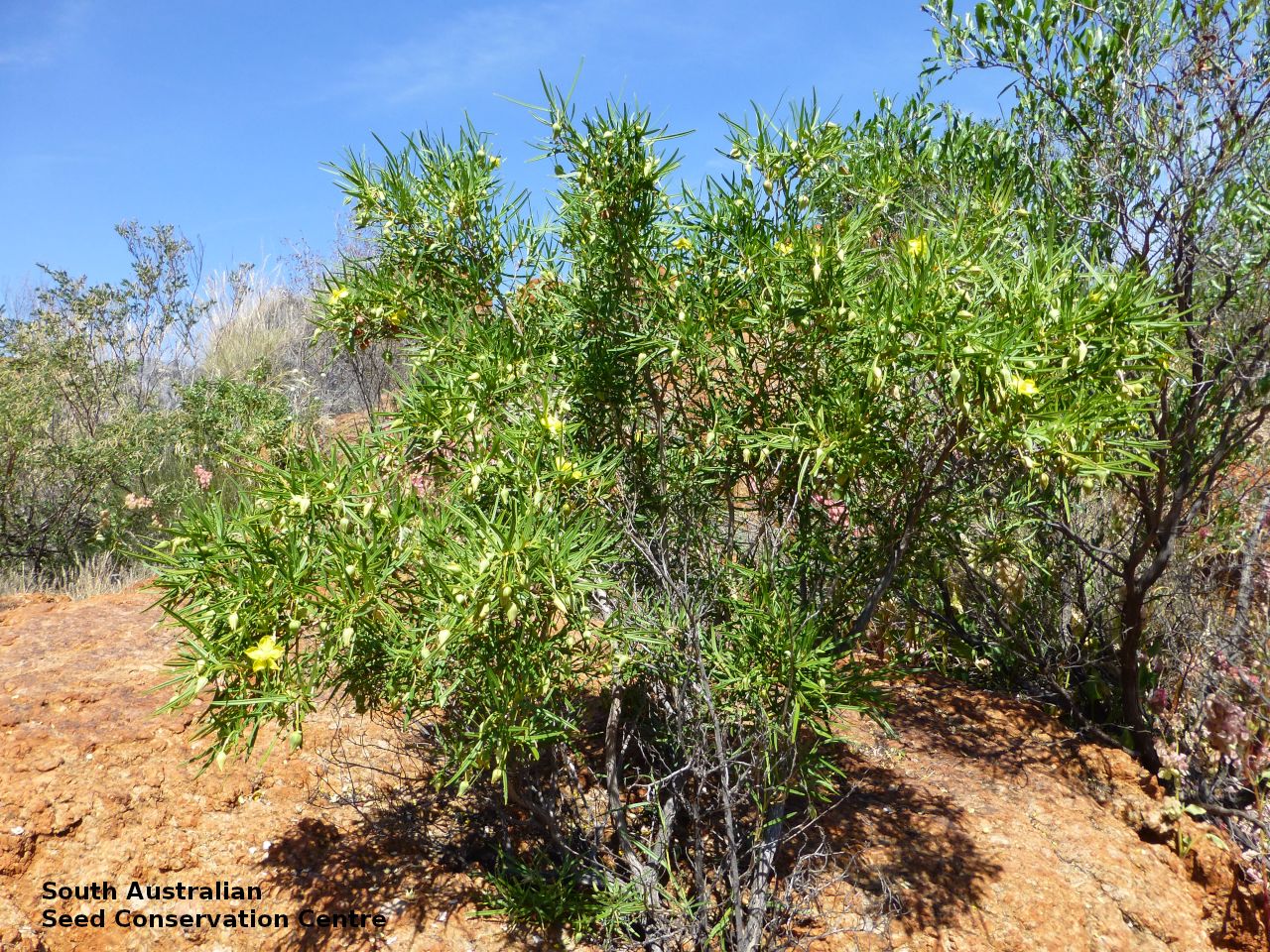
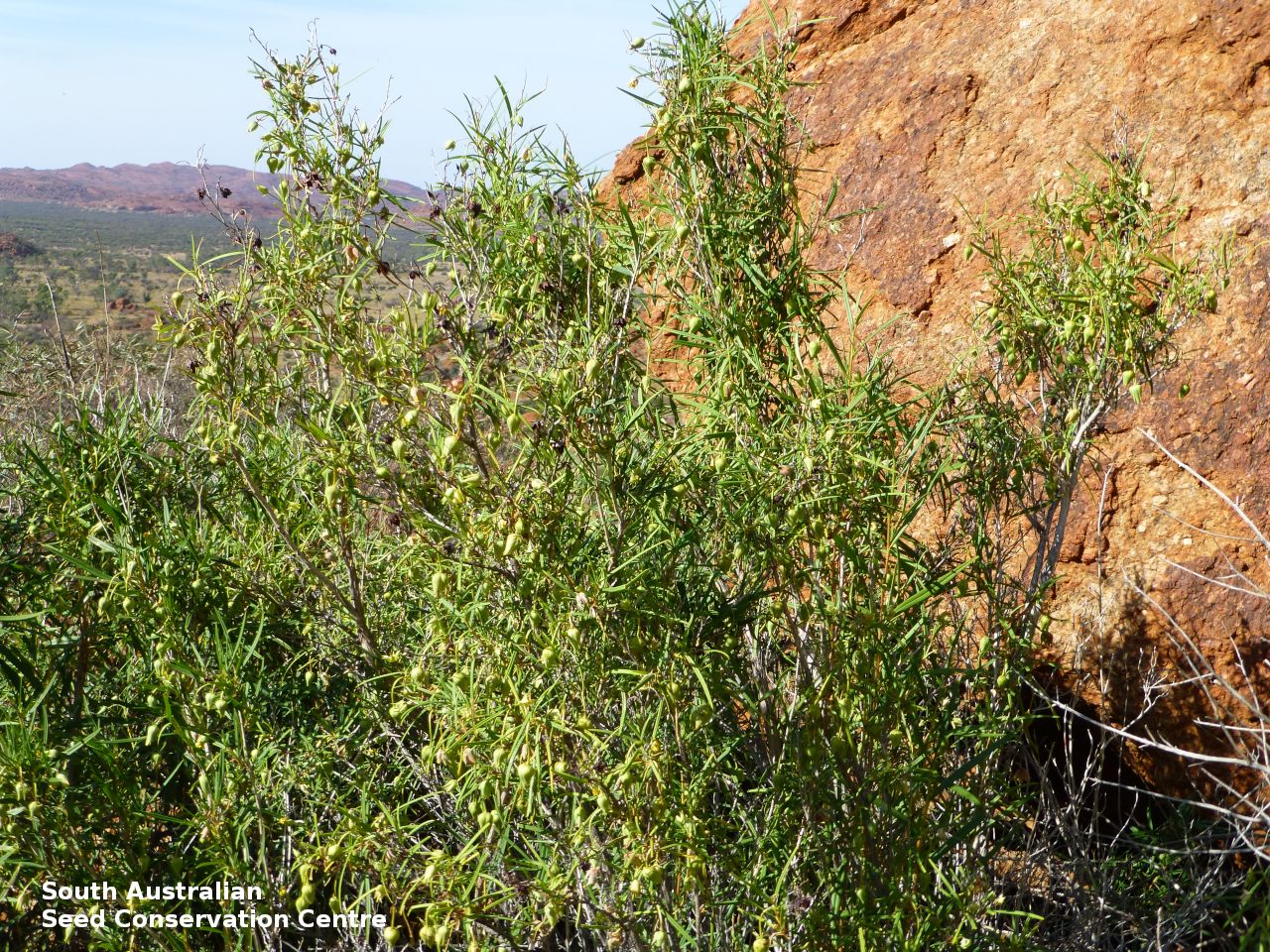
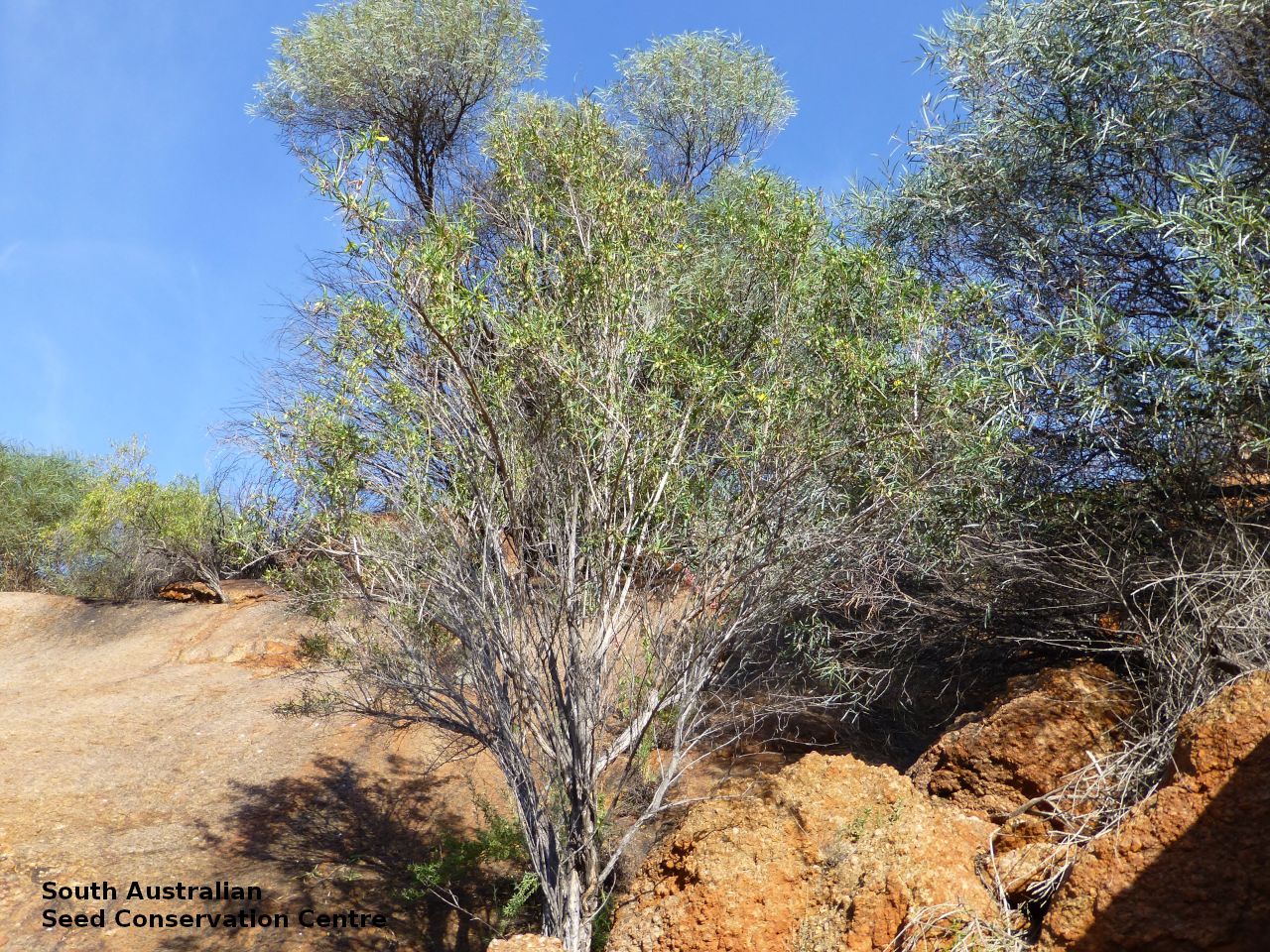
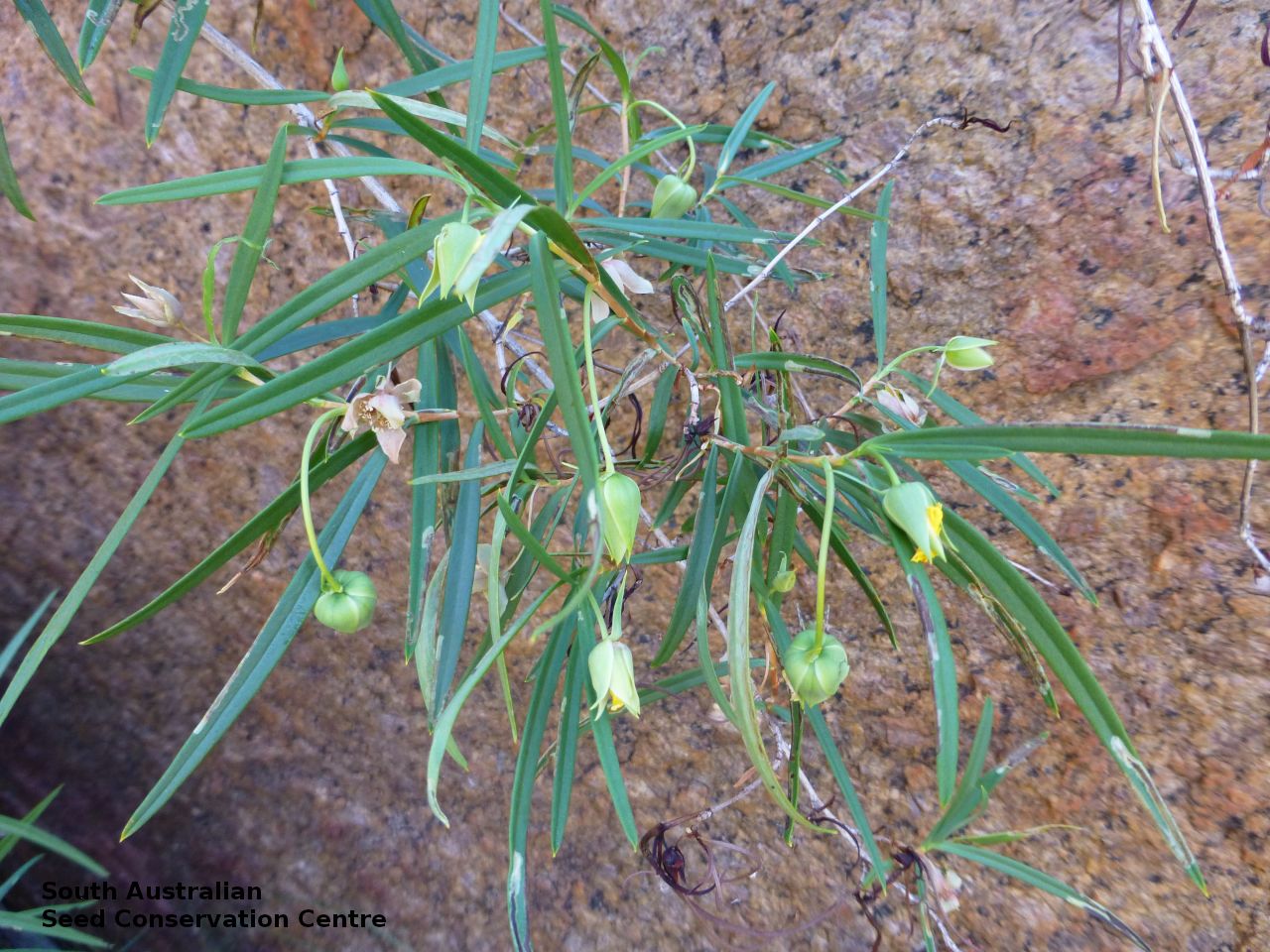
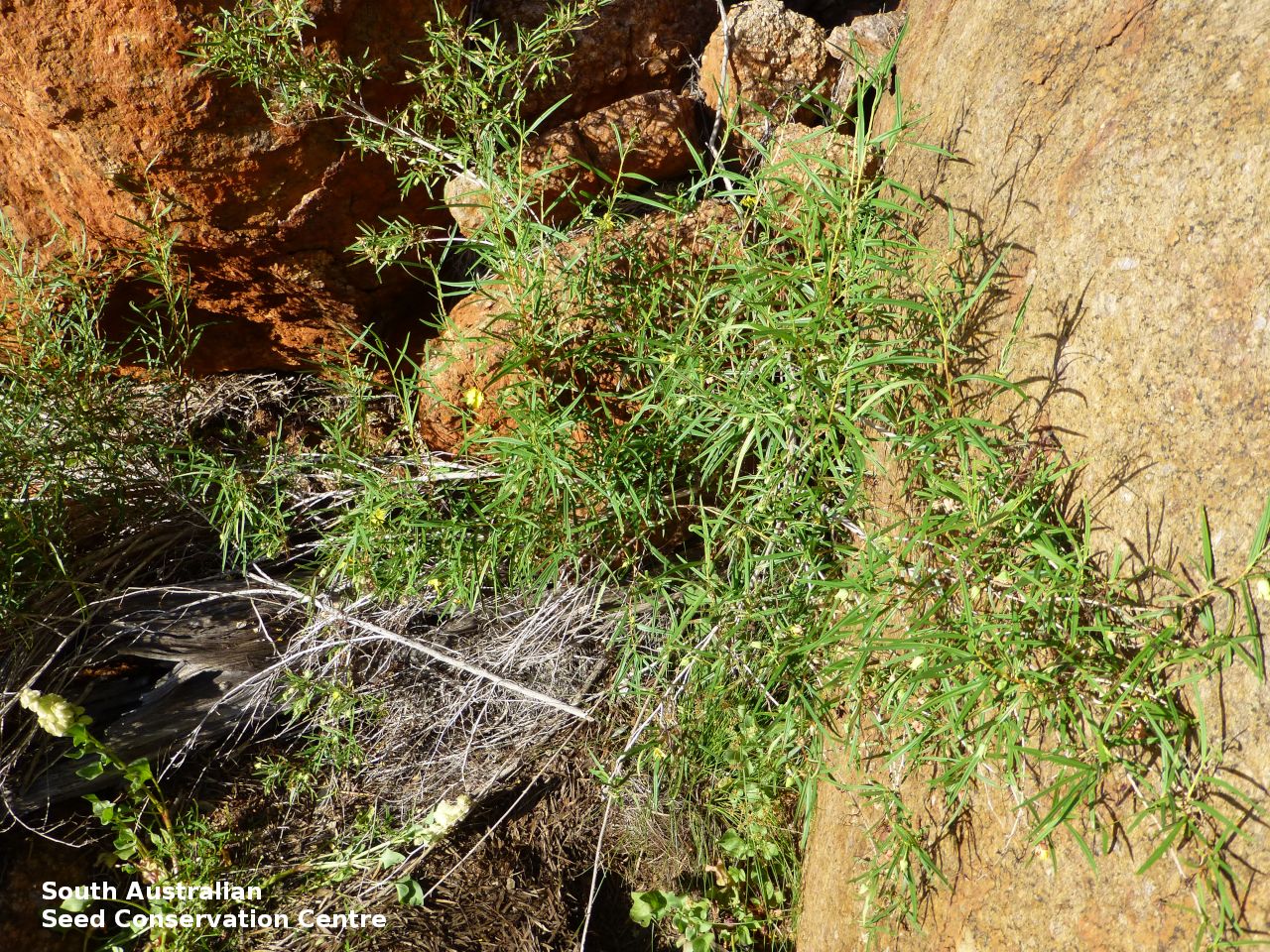
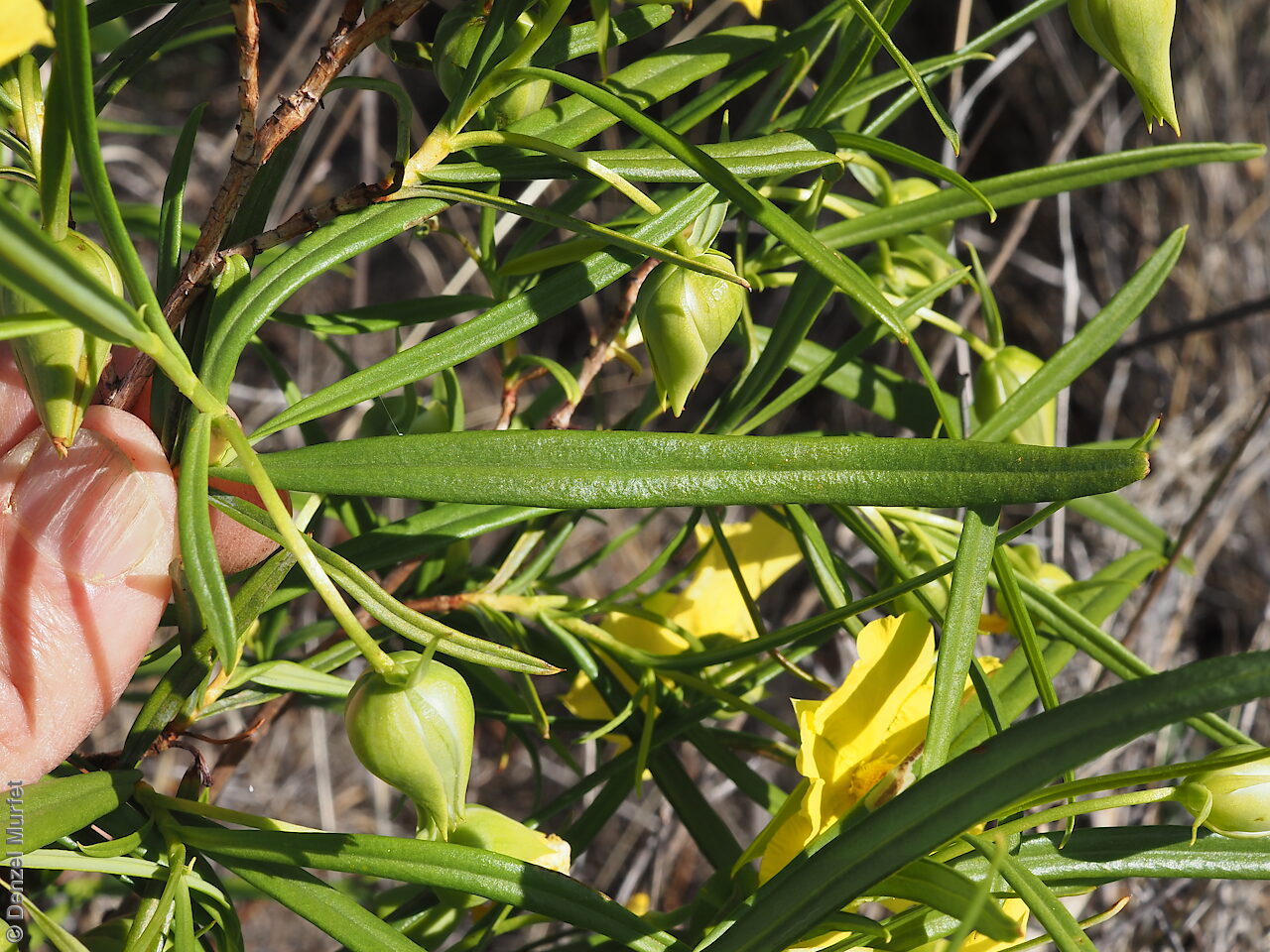
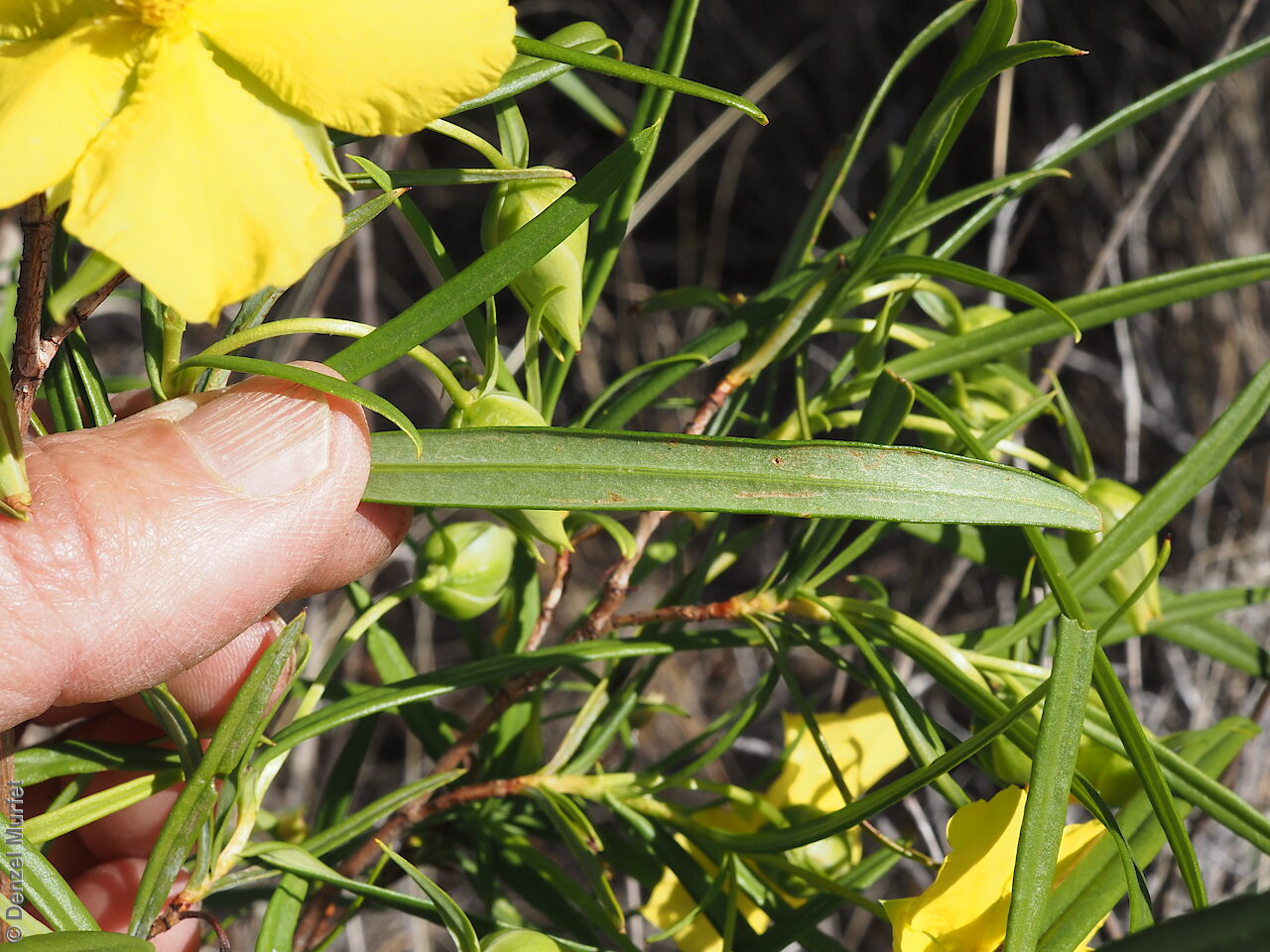
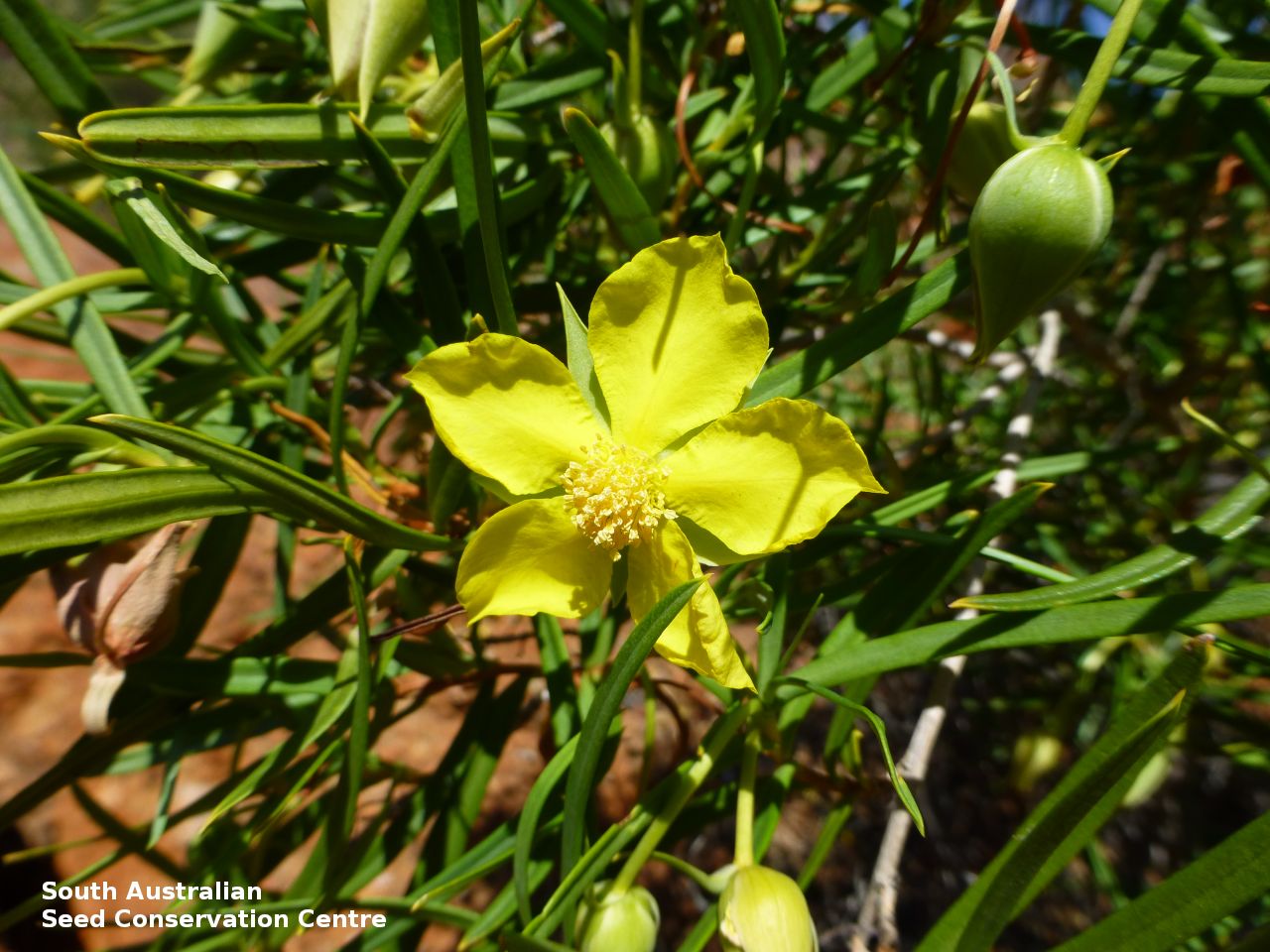
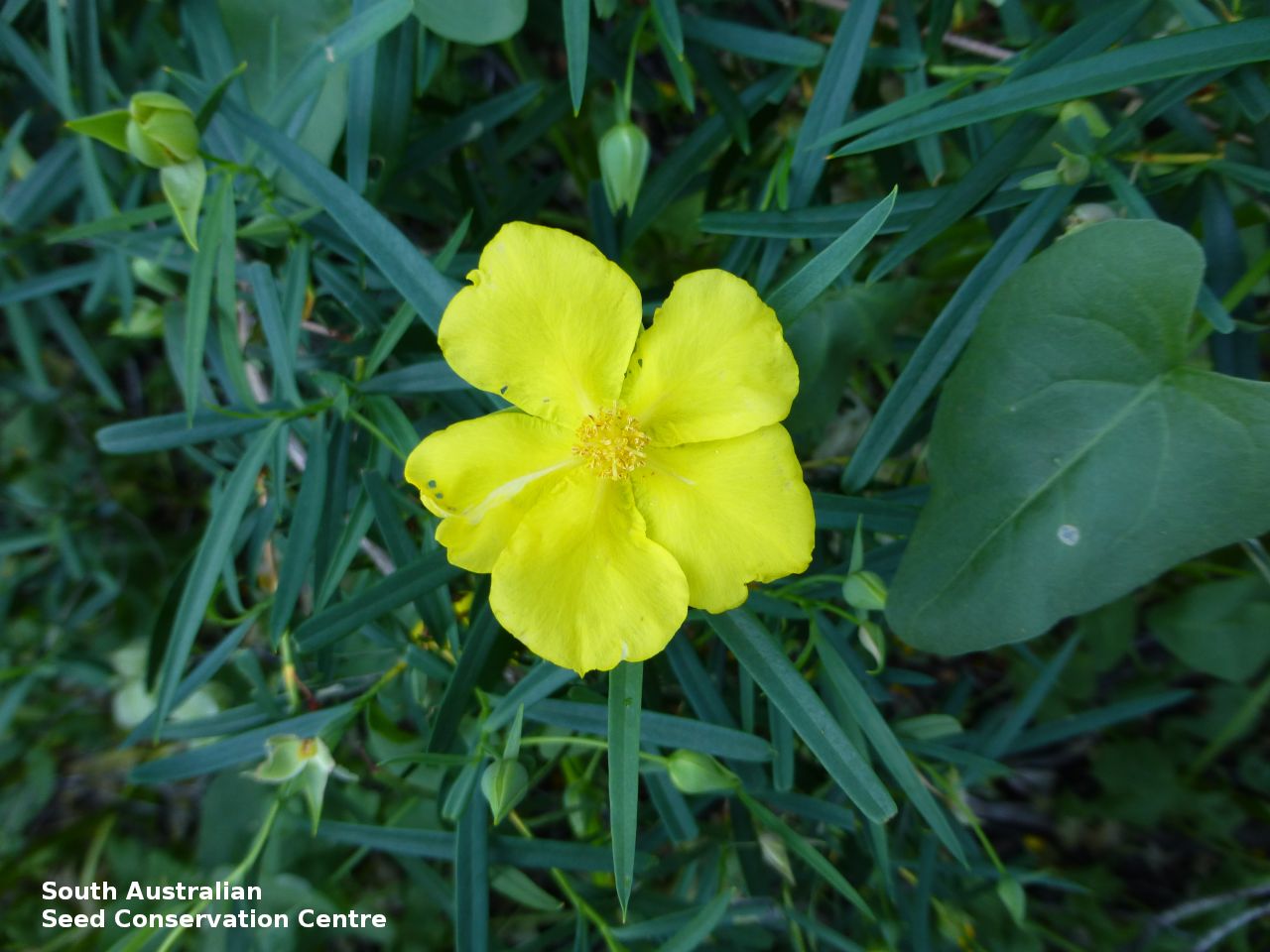
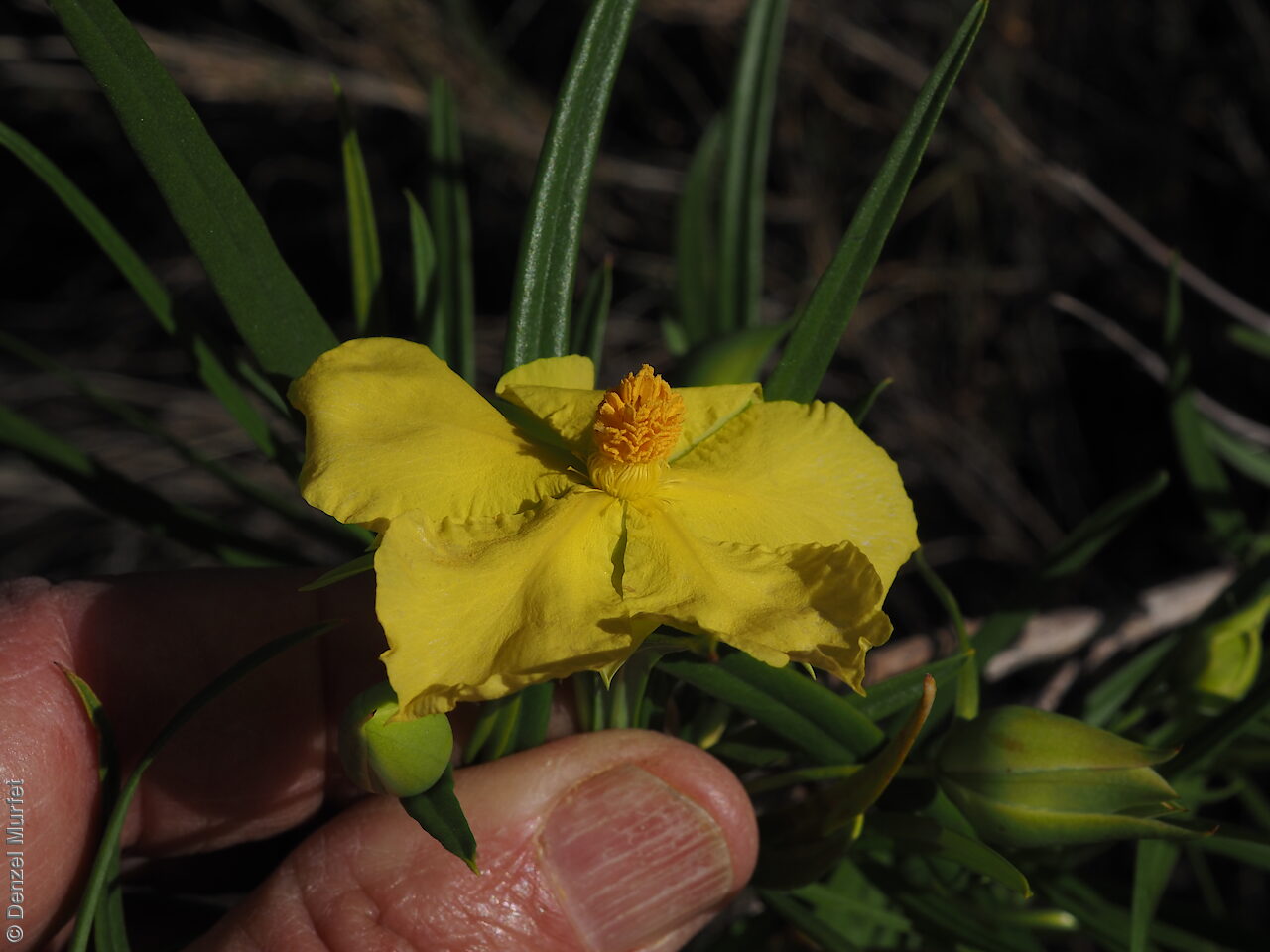
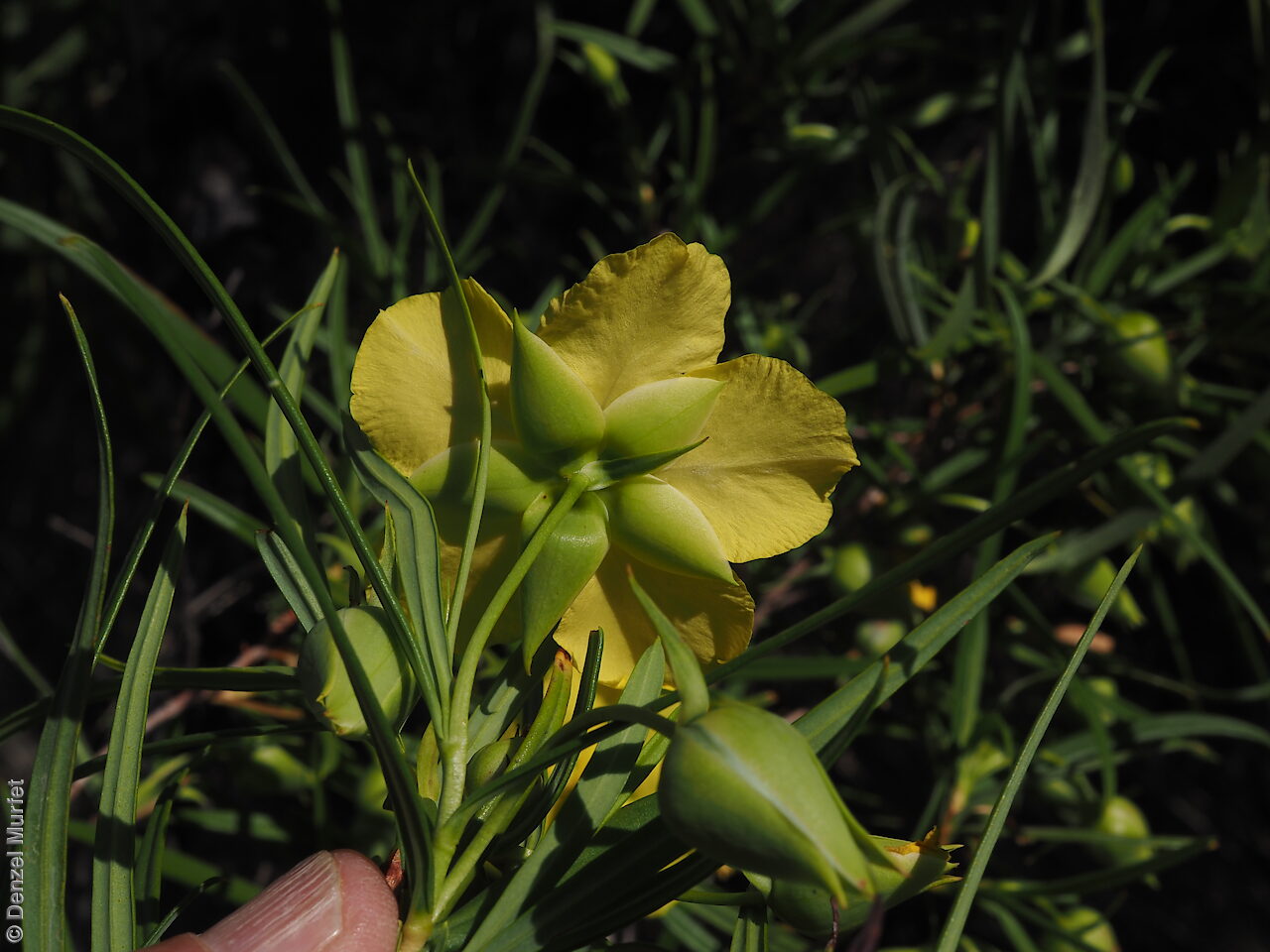
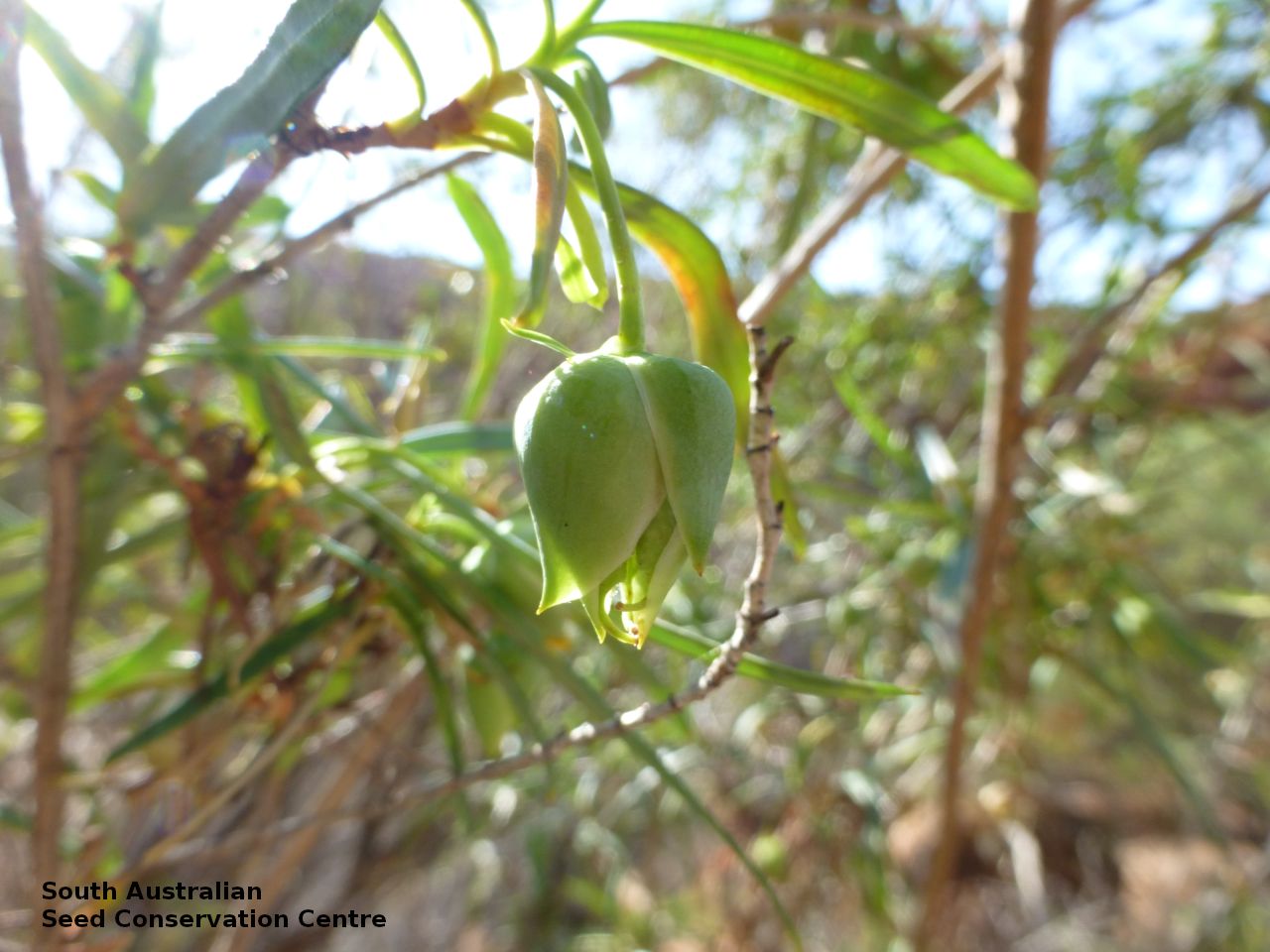
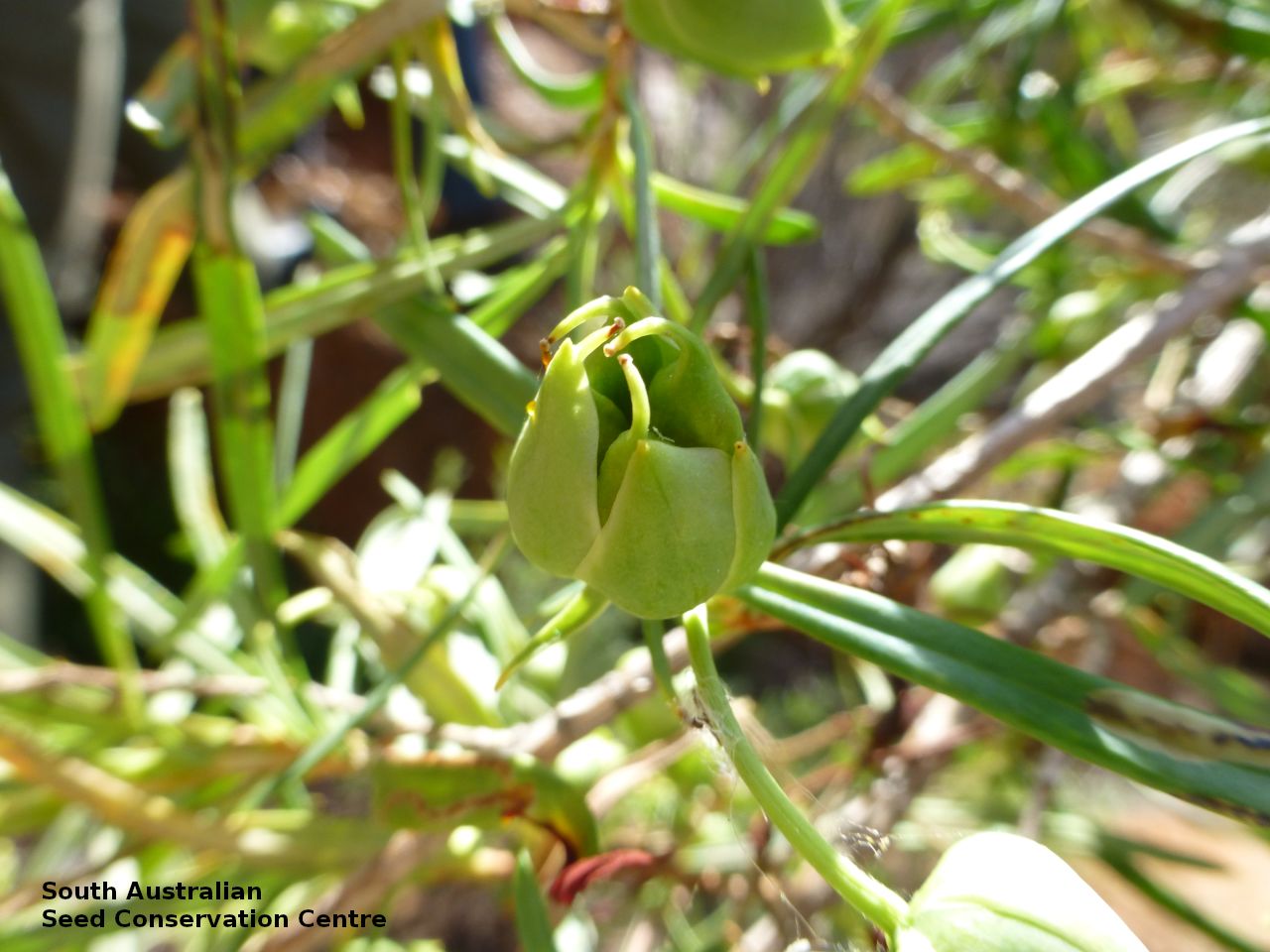
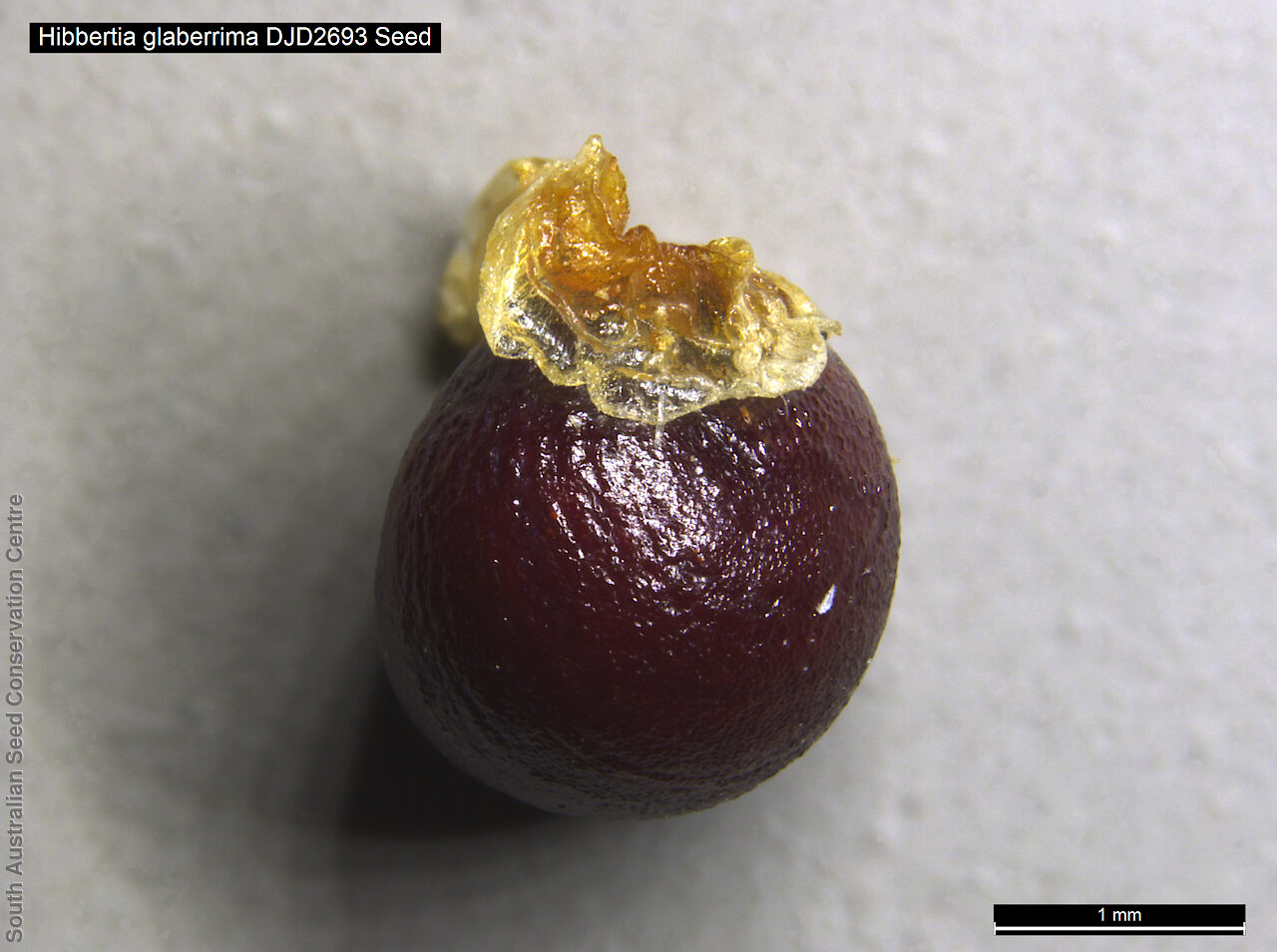
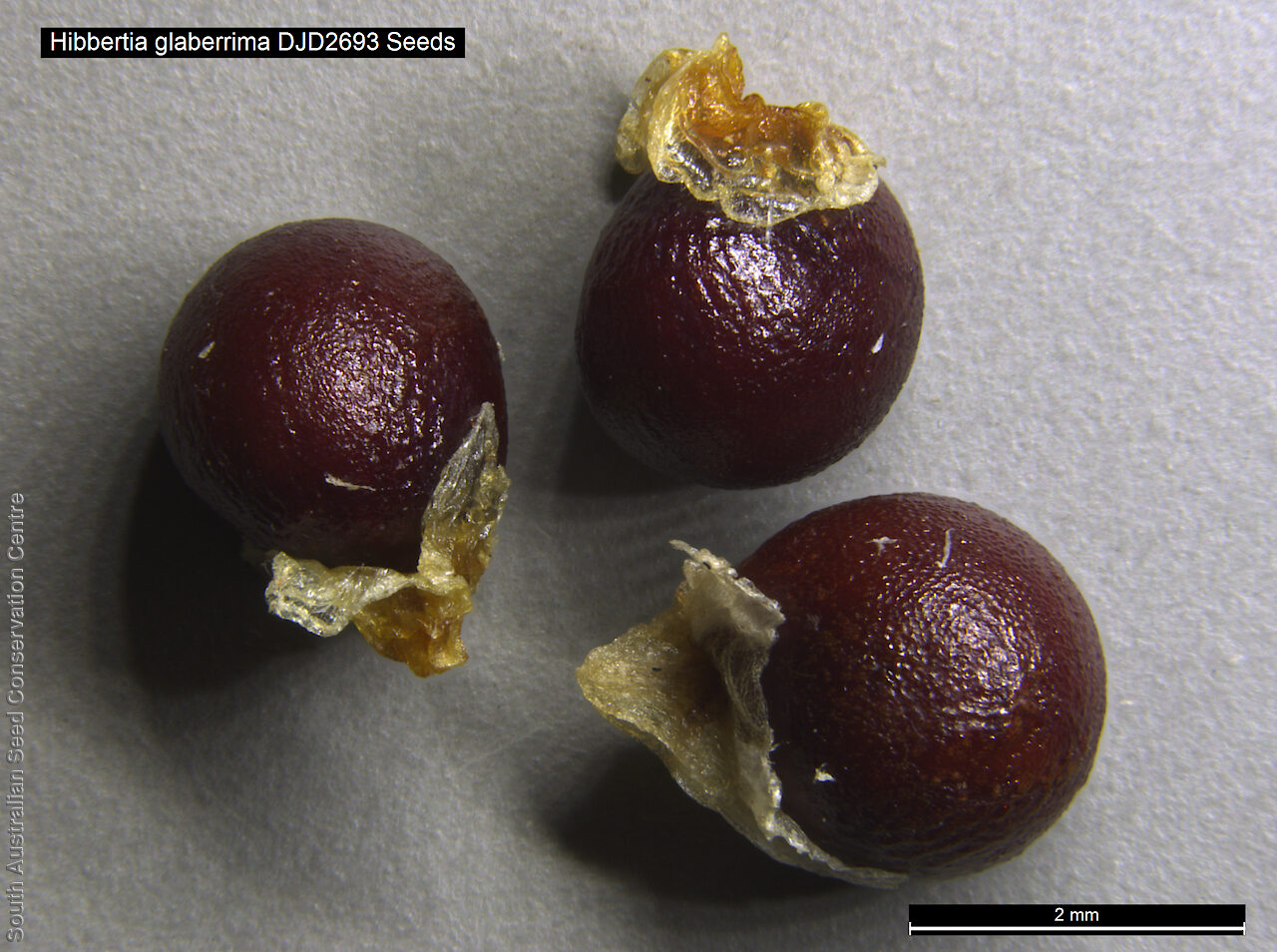


Botanical art
Prior names
Hibbertia muelleri-ferdinandi
Common names
Central Australian Guinea-flower
Inland Guinea-flower
Etymology
Hibbertia, named after George Hibbert (1757-1837), a London merchant who maintained a private botanic garden at Chelsea. Glaberrima meaning very glabrous, referring to the species being devoid of hairs.
Distribution and status
Found in far north-western South Australia, growing on rocky soil in rocky areas. Also found in Western Australia and the Northern Territory. Native. Rare in South Australia. Uncommon in the other States.
Herbarium region: North Western
NRM region: Alinytjara Wilurara
AVH map: SA distribution map (external link)
Plant description
Glabrous spreading shrub to 50 cm high. Leaves linear-oblong to lanceolate or linear-elliptic, slightly recurved at the tip; usually to 100 mm long and 12 mm wide. Flowers yellow, large to 3 cm across on solitary pedicels; single bract at the base of the calyx, linear, leaf-like but shorter than the sepals. Flowers throughout the year. Fruits are brown glabrous capsule with 3 carpels with 6-9 ovules in each, Seeds are brown, globular seed to 2.1 mm diameter.
Seed collection and propagation
Collect seeds between January and December. Collect mature capsules that are turning a pale straw-colour and contain brown seeds. Place the capsules in a tray and leave to dry for one to two weeks. Then rub the capsules gently by hand to dislodge the seeds. Use a sieve to separate the unwanted material. Store the seeds with a desiccant such as dried silica beads or dry rice, in an air tight container in a cool and dry place This genus tends to have low seed viability. From one collection, the seed viability was average, at 65%. This species has morpho-physiological dormancy and can be difficult to germinate.
| Location | No. of seeds (weight grams) | Number of plants | Date collected | Collection number Collection location | Date stored | % Viability | Storage temperature |
|---|---|---|---|---|---|---|---|
| BGA MSB | 2,500 (9.05 g) 2,500 (9.05 g) | 20+ | 4-Sep-2013 | DJD2693 North Western | 24-Mar-2015 | 65% | -18°C |
Number of plants: This is the number of plants from which the seeds were collected.
Collection location: The Herbarium of South Australia's region name.
% Viability: Percentage of filled healthy seeds determined by a cut test or x-ray.